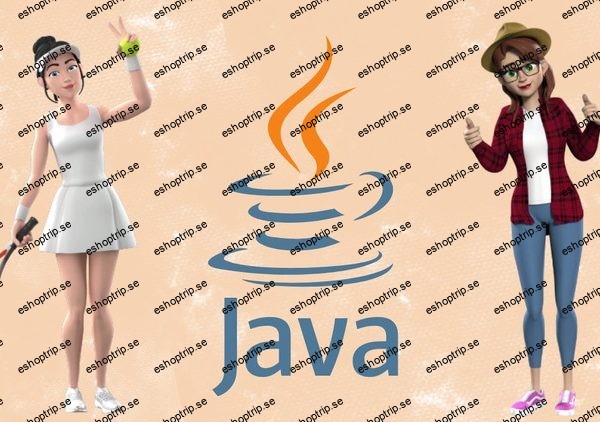Published 9/2024
MP4 | Video: h264, 1920×1080 | Audio: AAC, 44.1 KHz
Language: English | Size: 1.53 GB | Duration: 3h 23m
Master Lean Six Sigma with practical Excel and Minitab tools. Prepare for certification success.
What you’ll learn
By the end of this course, you will have hands-on experience with key Lean Six Sigma tools like Fishbone Diagrams, Pareto Charts, and Regression Analysis
Learn how to use real-world data to identify root causes of inefficiencies, perform statistical analyses, and develop practical solutions to optimize processes
Gain the skills to define, measure, analyze, improve, and control business processes with a structured approach
This course will not only equip you with practical knowledge but also thoroughly prepare you for the Lean Six Sigma Green Belt certification exam
Requirements
While this course is beginner-friendly, a fundamental knowledge of business operations or workflows will help you grasp the concepts more quickly.
Description
Module 1: Introduction to Lean Six SigmaConcepts Covered:Overview of Lean and Six Sigma.The history and evolution of Lean Six Sigma.Practical importance of Lean Six Sigma across industries.Lean fundamentals: 7 Wastes, 5S methodology, and integration with Six Sigma.Module 2: Define Phase – Problem Solving EssentialsConcepts Covered:Defining project goals and scope.Understanding customer requirements (VOC, VOB).Developing a practical Project Charter and SIPOC analysis.Process mapping and flowchart creation.Module 3: Measure Phase – Data Collection & Baseline AnalysisConcepts Covered:Techniques for collecting accurate data and establishing baselines.Measurement System Analysis (MSA) including Gage R&R.Process Capability Analysis (Cp, Cpk).Practical tools for measuring and monitoring performance.Module 4: Analyze Phase – Identifying Root Causes (Part 1)Concepts Covered:Descriptive statistics and graphical analysis.Fishbone Diagrams and Pareto Analysis.Using data to identify root causes of process inefficiencies.Module 5: Analyze Phase – Advanced Analysis Techniques (Part 2)Concepts Covered:Hypothesis testing: Parametric (t-tests, ANOVA) and non-parametric (Mann-Whitney).Process door and data door analysis.Advanced statistical techniques for validating root causes.Module 6: Improve Phase – Practical Solutions & Optimization (Part 1)Concepts Covered:Brainstorming and implementing practical solutions using Lean tools.Regression analysis for process optimization.Using prioritization matrices to select the best improvement strategies.Module 7: Improve Phase – Process Redesign & Piloting (Part 2)Concepts Covered:Process redesign and workflow improvements.Design of Experiments (DOE) for optimizing processes.Implementing pilot tests and tracking results.Module 8: Control Phase – Sustaining ImprovementsConcepts Covered:Developing control plans and ensuring sustainability.Statistical Process Control (SPC) and non-SPC controls like Poka-Yoke.Continuous monitoring and feedback loops.Module 9: Lean Tools and Techniques for Continuous ImprovementConcepts Covered:Deep dive into Lean tools like Kanban, SMED, and TPM.Practical applications of Lean tools in Six Sigma projects.Fostering a Lean culture and continuous improvement mindset.
Overview
Section 1: Introduction
Lecture 1 Introduction
Lecture 2 1.1 – 1 – Analyzing customer wait times scenario overview
Lecture 3 1.1 – 2 -Analyzing wait times example in excel
Lecture 4 1.1 -3 – Interpretation of Results after improvement
Lecture 5 1.1 -4 – Comparing Wait times using graph
Lecture 6 1.2-Example2-0 – Overview of optimizing inventory levels scenario
Lecture 7 1.2-Example2-1 – Inventory analysis before improvement using excel
Lecture 8 1.3 – Lean Six Sigma Methodologies
Lecture 9 7 wastes
Lecture 10 1.4-Example3-0 – Scenario overview of defect rate reduction
Lecture 11 1.4-Example3-1 – Creating Gantt Chart in Excel and Recap
Section 2: Module 2: Define Phase – Problem Solving Essentials
Lecture 12 Define Phase – Problem Solving Essentials
Lecture 13 2.2
Section 3: Module 3: Measure Phase – Data Collection & Baseline Analysis
Lecture 14 Measure Phase
Lecture 15 Measure Phase with example in Excel
Lecture 16 Measure Phase with example in Minitab
Section 4: Analyze Phase – Identifying Root Causes (Part 1)
Lecture 17 Analyze Phase – 1
Lecture 18 Analyze Phase – Reducing customer complaints scenario in Excel
Section 5: Module 5: Analyze Phase – Advanced Analysis Techniques (Part 2)
Lecture 19 Advanced Analysis Techniques (Part 2)
Section 6: Module 6: Improve Phase – Practical Solutions & Optimization (Part 1)
Lecture 20 Improve Phase 1
Lecture 21 Prioritization Matrix
Lecture 22 Regression Analysis
Section 7: Module 7: Improve Phase – Process Redesign & Piloting (Part 2)
Lecture 23 Improve Phase – Excel example
Section 8: Module 8: Control Phase – Sustaining Improvements
Lecture 24 Control Phase – Sustaining Improvements
Section 9: Module 9: Lean Tools and Techniques for Continuous Improvement
Lecture 25 Lean Tools and Techniques for Continuous Improvement
Section 10: Practice Problems
Lecture 26 ANOVA and DOE
Lecture 27 Confidence Interval
Lecture 28 Cost Analysis
Lecture 29 Descriptive Statistics
Lecture 30 Hypothesis Testing
Lecture 31 lean metrics and calculations
Lecture 32 Probability and Distributions
Lecture 33 Process Capability Sigma Level
Section 11: Final MCQs
Section 12: Course Materials
Lecture 34 Terms,Study Guide and Cheat Sheet
Professionals in Quality Management and Operations: Those working in quality control, operations management, or process improvement roles looking to enhance their skills with Lean Six Sigma tools and methodologies.,Aspiring Project Managers and Leaders: Individuals who want to lead Lean Six Sigma projects, optimize workflows, and drive operational excellence within their teams or organizations.,Engineers and Analysts: Industrial engineers, business analysts, and data-driven professionals aiming to apply Lean Six Sigma techniques to improve efficiency and reduce waste in manufacturing or service industries.,Students Preparing for Certification: Anyone looking to prepare thoroughly for the Lean Six Sigma Green Belt certification exam and seeking practical knowledge to excel in the test and their future career.
Homepage










